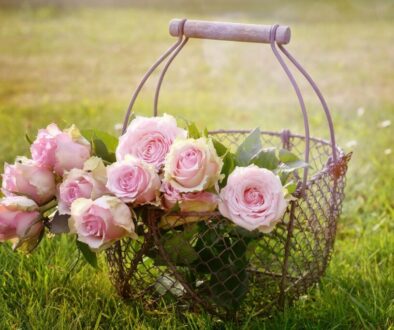Flowers That Bloom at Night for Moon Gardens: A Magical Nighttime Escape
Imagine stepping into your garden under the soft glow of the moon, surrounded by flowers that come alive at night. Moon gardens are designed to captivate your senses after sunset, and night-blooming flowers are the stars of this enchanting space. These unique blooms not only add beauty but also release intoxicating fragrances that make your evening strolls unforgettable. Let’s dive into the world of nocturnal flowers and discover how they can transform your garden into a moonlit paradise.
Why Night-Blooming Flowers Are Perfect for Moon Gardens
Moon gardens are about creating a serene, magical atmosphere that shines under the moonlight. Night-blooming flowers are the perfect addition because they thrive when the sun goes down. Their pale petals reflect the moon’s glow, creating a dreamy, ethereal effect. Plus, many of these flowers emit sweet, alluring scents that attract nighttime pollinators like moths and bats. By planting these blooms, you’ll not only enjoy their beauty but also support local ecosystems. It’s a win-win for you and nature!
One of the most fascinating things about night-blooming flowers is their unique adaptations. These plants have evolved to open their petals after dark, often to avoid daytime heat or to attract specific pollinators. Their colors are usually white, silver, or pale pastels, which stand out beautifully in the moonlight. Imagine the soft glow of white flowers like moonflowers or evening primroses lighting up your garden path. It’s like having a natural nightlight that adds charm and elegance to your outdoor space.
Top Night-Blooming Flowers for Your Moon Garden
- Moonflower (Ipomoea alba)
The moonflower is a must-have for any moon garden. Its large, trumpet-shaped blooms open at dusk and release a sweet, intoxicating fragrance. The pure white flowers glow under the moonlight, creating a magical ambiance. These vines grow quickly, making them perfect for trellises or fences. Just plant them in a sunny spot, and they’ll reward you with nightly blooms all summer long.
- Evening Primrose (Oenothera biennis)
Evening primroses are delicate, cup-shaped flowers that bloom in shades of yellow, pink, or white. They open in the evening and stay fresh until morning, filling your garden with a subtle, lemony scent. These hardy plants are easy to grow and thrive in well-drained soil. Plus, they attract pollinators like moths, adding life to your nighttime garden.
- Night-Blooming Jasmine (Cestrum nocturnum)
If you love fragrant flowers, night-blooming jasmine is a game-changer. Its tiny, greenish-white flowers may not look like much during the day, but at night, they release an incredibly sweet aroma that can fill your entire garden. Plant it near a seating area or window to enjoy its scent on warm summer nights. Just be sure to give it plenty of space, as it can grow quite large.
- Angel’s Trumpet (Brugmansia)
Angel’s trumpet is a showstopper with its large, pendulous flowers that bloom at night. These flowers come in shades of white, pink, yellow, or orange and emit a strong, sweet fragrance. They’re perfect for adding height and drama to your moon garden. However, be cautious, as all parts of this plant are toxic if ingested.
- Night Phlox (Zaluzianskya capensis)
Night phlox, also known as midnight candy, is a charming little flower that blooms in clusters. Its white or pink petals open at dusk and release a honey-like scent that’s simply irresistible. This low-growing plant is ideal for borders or containers, adding a touch of sweetness to your moon garden.
How to Care for Night-Blooming Flowers
Caring for night-blooming flowers is easier than you might think. Most of these plants prefer well-drained soil and plenty of sunlight during the day. Water them regularly, especially during dry spells, but avoid overwatering, as this can lead to root rot. Adding a layer of mulch around the base of the plants can help retain moisture and keep weeds at bay.
Pruning is also important to keep your night-blooming flowers healthy and looking their best. Remove dead or faded blooms to encourage new growth and prevent diseases. For climbing plants like moonflowers, provide sturdy supports like trellises or arbors to help them thrive.
One thing to keep in mind is that many night-blooming flowers are sensitive to frost. If you live in a colder climate, consider growing them in containers that can be brought indoors during the winter. This way, you can enjoy their beauty year after year.
Designing Your Moon Garden with Night-Blooming Flowers
Creating a moon garden is all about playing with light, texture, and fragrance. Start by choosing a mix of night-blooming flowers that complement each other in color and scent. Plant them in clusters or drifts to create a cohesive look. Add silver or gray foliage plants like lamb’s ear or dusty miller to enhance the moonlit effect.
Incorporate hardscape elements like stone pathways, benches, or water features to add structure and interest. A small pond or fountain can reflect the moonlight, doubling the magic of your garden. Don’t forget to include lighting, such as solar-powered lanterns or fairy lights, to highlight your flowers and create a cozy atmosphere.
Finally, think about how you’ll experience your moon garden. Place seating areas near fragrant flowers like night-blooming jasmine or angel’s trumpet. Add a hammock or swing where you can relax and enjoy the sights and scents of your nighttime oasis. With a little planning, your moon garden will become your favorite place to unwind after a long day.
The Magic of Night-Blooming Flowers
Night-blooming flowers have a special kind of magic that’s hard to resist. They transform your garden into a serene, enchanting space that comes alive after dark. Whether you’re drawn to the sweet fragrance of night-blooming jasmine or the glowing petals of moonflowers, these blooms are sure to captivate your heart.
By incorporating night-blooming flowers into your moon garden, you’ll create a unique outdoor retreat that’s perfect for relaxing, entertaining, or simply enjoying nature’s beauty. So why not give it a try? Plant a few of these magical flowers, and let the moonlight work its charm. Your garden will thank you, and so will your soul.
The Science Behind Night-Blooming Flowers
Have you ever wondered why some flowers bloom at night? It’s not just a random act of nature—it’s a fascinating survival strategy. Night-blooming flowers have evolved to attract specific pollinators, like moths and bats, that are active after dark. These pollinators are drawn to the flowers’ pale colors and strong fragrances, which are easier to detect in the moonlight. By blooming at night, these plants avoid competition with daytime flowers and ensure their survival.
Another interesting fact is that many night-blooming flowers close during the day to conserve water. This adaptation helps them thrive in hot, dry climates where daytime temperatures can be harsh. So, when you plant night-blooming flowers in your moon garden, you’re not just adding beauty—you’re also supporting a delicate ecological balance. How cool is that?
More Night-Blooming Flowers to Explore
- Four O’Clocks (Mirabilis jalapa)
Four o’clock are whimsical flowers that live up to their name—they typically open in the late afternoon and stay open until morning. These trumpet-shaped blooms come in a variety of colors, including pink, yellow, white, and red. They’re easy to grow and can even self-seed, making them a low-maintenance addition to your moon garden. Plus, their sweet fragrance is a delight on warm summer evenings.
- Night Gladiolus (Gladiolus tristis)
Night gladiolus is a lesser-known gem that deserves a spot in your moon garden. Its creamy yellow flowers open at night and emit a spicy, clove-like scent. This tall, elegant plant adds vertical interest to your garden and pairs beautifully with other night-blooming flowers. Plant it in well-drained soil and watch it thrive.
- Tuberose (Polianthes tuberosa)
Tuberose is a classic night-blooming flower known for its intoxicating fragrance. Its waxy white flowers grow on tall spikes and open at night, filling the air with a rich, sweet scent. Tuberose is often used in perfumes and is a favorite for romantic moonlit gardens. Plant it in a sunny spot and enjoy its heavenly aroma all summer long.
- Night-Scented Stock (Matthiola long petals)
Night-scented stock is a charming annual that produces small, delicate flowers in shades of pink, purple, or white. While the blooms may look unassuming during the day, they release a powerful, sweet fragrance at night. This plant is perfect for borders or containers and pairs well with other night-blooming flowers. - Queen of the Night (Epiphyllum oxypetalum)
The Queen of the Night is a show-stopping cactus that produces large, white flowers that bloom for just one night each year. This rare and exotic plant is a conversation starter and a true treasure for any moon garden. While it requires a bit of patience, the sight of its stunning blooms is well worth the wait.
Creating a Sensory Experience in Your Moon Garden
A moon garden isn’t just about visual beauty—it’s about engaging all your senses. Night-blooming flowers play a key role in creating a multi-sensory experience that’s both calming and invigorating. Here’s how you can design your garden to delight your senses:
- Sight: Choose flowers with pale colors that reflect moonlight, like white, silver, or pastel shades. Add reflective elements like water features or metallic garden ornaments to enhance the glow.
- Smell: Incorporate fragrant flowers like night-blooming jasmine, tuberose, and angel’s trumpet to fill your garden with intoxicating scents.
- Sound: Add wind chimes, rustling grasses, or a bubbling fountain to create soothing sounds that complement the serene atmosphere.
- Touch: Include plants with interesting textures, like lamb’s ears or ferns, to add tactile interest to your garden.
- Taste: If you’re feeling adventurous, plant edible flowers like evening primroses or nasturtiums to add a culinary twist to your moon garden.
By engaging all your senses, you’ll create a garden that’s not just beautiful but also deeply relaxing and rejuvenating.
Tips for Maximizing the Impact of Your Moon Garden
- Layer Your Plants: Arrange your night-blooming flowers in layers, with taller plants at the back and shorter ones at the front. This creates depth and ensures that every flower gets its moment in the moonlight.
- Use Containers: If you have limited space or poor soil, consider growing night-blooming flowers in containers. This allows you to move them around and experiment with different arrangements.
- Add Lighting: While moonlight is the star of the show, subtle garden lighting can enhance the beauty of your night-blooming flowers. Use soft, warm lights to highlight key features without overpowering the natural glow.
- Incorporate Seating: Create cozy seating areas where you can relax and enjoy your moon garden. A bench under a trellis of moonflowers or a hammock surrounded by night-blooming jasmine is the perfect spot to unwind.
- Experiment with Timing: Some night-blooming flowers, like four o’clock, open in the late afternoon, while others, like moonflowers, open at dusk. By planting a mix of these, you can extend the blooming period and enjoy your garden for longer.
The Emotional Benefits of a Moon Garden
A moon garden isn’t just a feast for the senses—it’s also a sanctuary for the soul. Spending time in a moonlit garden can have a profound calming effect, helping you unwind and reconnect with nature. The soft glow of the flowers, the gentle rustle of leaves, and the sweet fragrances create a peaceful atmosphere that’s perfect for meditation, reflection, or simply enjoying the moment.
In today’s fast-paced world, having a space where you can slow down and appreciate the beauty of the night is more important than ever. A moon garden offers a unique opportunity to escape the stresses of daily life and find solace in the quiet magic of the night.
Inspiring Stories of Moon Gardens Around the World
Moon gardens have been cherished for centuries in various cultures. In Japan, moon-viewing gardens, or tsukimi niwa, are designed to celebrate the beauty of the moon during the autumn harvest festival. These gardens often feature white flowers, reflective water features, and open spaces for moon gazing.
In India, night-blooming flowers like jasmine and tuberose are used in traditional gardens and religious ceremonies. Their fragrant blooms are believed to bring peace and positivity, making them a cherished part of the culture.
Even in Western gardens, the concept of moon gardens has gained popularity in recent years. Gardeners are rediscovering the charm of night-blooming flowers and creating their moonlit retreats. Whether you’re inspired by ancient traditions or modern trends, a moon garden is a timeless way to celebrate the beauty of the night.
Your Moon Garden Awaits
Creating a moon garden is a journey of discovery, creativity, and connection. It’s a chance to explore the hidden world of night-blooming flowers and create a space that’s uniquely yours. Whether you have a sprawling backyard or a small balcony, you can bring the magic of the moon into your outdoor space.
So, what are you waiting for? Start planning your moon garden today. Choose your favorite night-blooming flowers, experiment with designs, and let your imagination run wild. With a little effort and a lot of love, you’ll create a garden that shines brightly under the moonlight—a place where you can escape, unwind, and dream.
Final Words: Let the Moonlight Guide You
As you embark on your moon garden journey, remember that it’s not just about the flowers—it’s about the experience. It’s about stepping into your garden at night and feeling a sense of wonder and peace. It’s about creating a space where you can connect with nature and yourself.
Night-blooming flowers are more than just plants—they’re a reminder of the beauty and magic that exist in the world, even when the sun goes down. So, let the moonlight guide you, and let your moon garden be a reflection of your dreams and desires. And may your nights be filled with beauty and joy!
Happy Gardening!






